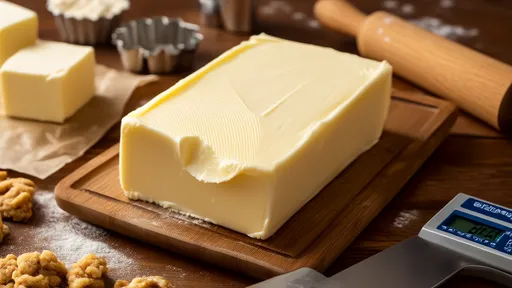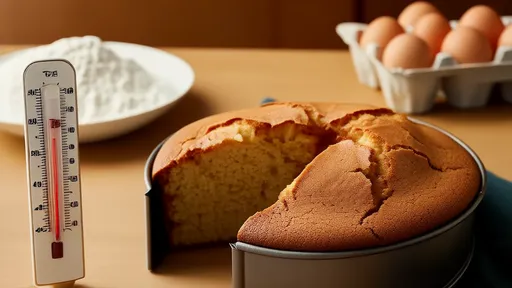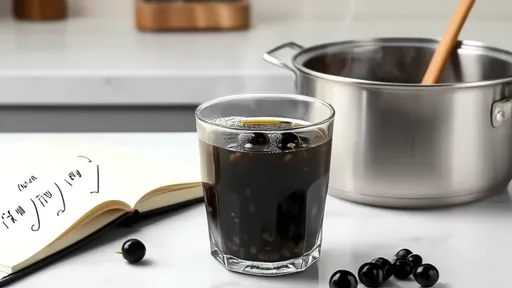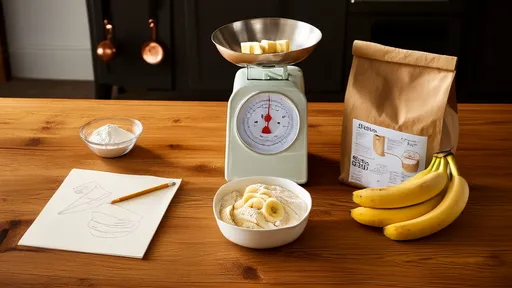In the world of pastry arts and dessert making, achieving the perfect consistency in whipped cream is both an art and a science. Among the various techniques and ingredients used to stabilize cream, gelatin sheets stand out as a reliable and precise method. Unlike powdered gelatin, sheets offer a level of accuracy that professionals swear by, especially when working with delicate textures. The key lies in understanding the exact measurements and the science behind how gelatin interacts with cream to create that flawless, airy yet stable structure.
The process begins with selecting the right type of gelatin sheets. Not all gelatin sheets are created equal; they come in different bloom strengths, which refer to their gelling power. For cream stabilization, a medium bloom strength (typically around 200 bloom) is ideal. This ensures the cream holds its shape without becoming rubbery or overly stiff. The precision of using sheets, as opposed to powdered gelatin, eliminates the guesswork involved in measuring, as each sheet is pre-portioned to deliver consistent results.
One of the most critical aspects of incorporating gelatin into whipped cream is the hydration process. Gelatin sheets must be soaked in cold water for about 5 to 10 minutes until they become soft and pliable. This step, known as blooming, allows the gelatin to absorb water evenly, which is essential for smooth integration into the cream. Once bloomed, the excess water is gently squeezed out, and the gelatin is melted—either over a double boiler or by microwaving in short bursts—before being incorporated into the cream.
The temperature at which the gelatin is added to the cream is another factor that can make or break the final product. The cream should be lightly whipped to soft peaks before the melted gelatin is introduced. The gelatin must be warm but not hot, as excessive heat can deflate the cream or cause uneven setting. A common technique is to temper the gelatin by mixing a small amount of whipped cream into it first, then folding this mixture back into the main batch. This ensures even distribution without overworking the cream.
Timing is everything when it comes to stabilizing cream with gelatin. Once the gelatin is added, the cream should be whipped to medium-stiff peaks quickly but gently. Over-whipping can lead to a grainy texture, while under-whipping may result in a runny consistency. The stabilized cream should be used immediately or refrigerated if not needed right away. Unlike unstabilized whipped cream, which begins to deflate within hours, gelatin-stabilized cream can maintain its volume and texture for up to 48 hours, making it a favorite for professional bakers preparing desserts in advance.
Beyond the technicalities, the appeal of gelatin-stabilized whipped cream lies in its versatility. It pipes beautifully, holds its shape under room temperature longer than traditional whipped cream, and can be flavored or sweetened without compromising its structure. Whether used as a topping for cakes, a filling for pastries, or a component in mousses, the precision of gelatin sheets ensures a foolproof outcome every time.
For those new to working with gelatin sheets, practice and patience are key. Start with small batches to get a feel for the texture and behavior of the stabilized cream. Over time, the process becomes intuitive, and the results speak for themselves—light, stable, and perfectly whipped cream that elevates any dessert. The precision of gelatin sheets may seem daunting at first, but once mastered, it becomes an indispensable tool in the pastry kitchen.

By /Jul 24, 2025

By /Jul 24, 2025

By /Jul 24, 2025

By /Jul 24, 2025

By /Jul 24, 2025

By /Jul 24, 2025

By /Jul 24, 2025

By /Jul 24, 2025

By /Jul 24, 2025

By /Jul 24, 2025

By /Jul 24, 2025

By /Jul 24, 2025

By /Jul 24, 2025

By /Jul 24, 2025

By /Jul 24, 2025

By /Jul 24, 2025

By /Jul 24, 2025

By /Jul 24, 2025